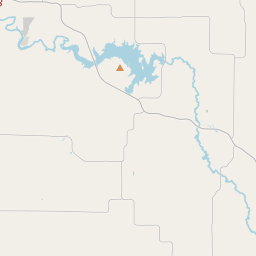Desdemona Cemetery
Historical marker location:






The town of Desdemona was a well established frontier community by the 1870s; a post office opened there in 1877. J. S. and Rosa Jones deeded one acre from the D. W. Funderburgh land survey for a "public graveyard" in 1880. The earliest marked grave is that of William E. Wright (1815-1878). It is likely that older unmarked burials exist among the oak trees here. Native rocks incised with initials or dates mark some early graves. Those buried here include pioneer settlers and their descendants; frontier matriarch Mrs. Kate (Kizzie) Shuler; veterans of the Civil War, World War I and World War II; Capt. A. J. O'Rear, a county commissioner and postmaster; S. E. Snodgrass, a physician who served the area for 50 years; local citizens who profited from the 1918 oil boom; Joe and Almeda Duke, owners of the site of the first oil gusher; and many young children. In 1918-19 oil discoveries surrounded the cemetery with flowing wells and oil derricks.
H. H. Williams' estate donated two acres of land in 1965. The Desdemona Cemetery association manages and maintains the site. The cemetery continues to serve the area as it has for more than a century. (1996)
As one of the most visible programs of the Texas Historical Commission (THC), historical markers commemorate diverse topics in Texas history, including: the history and architecture of houses, commercial and public buildings, religious congregations, and military sites; events that changed the course of local and state history; and individuals who have made lasting contributions to the state, community organizations, and businesses.
The University of Texas at Austin, founded in 1883, is one of the largest universities in the United States and has produced many notable alumni, including several U.S. presidents.
The county's official establishment came in 1858, when Texas Legislature recognized it as a separate entity. The county was named after William M. Eastland, who fought in the Texan Revolution and served as a Texas Ranger. During the late 19th and early 20th centuries, Eastland County experienced significant growth and development thanks to the arrival of railroads, making it a crucial transportation hub for the surrounding regions.
The discovery of oil in the early 20th century also brought prosperity to Eastland County. The oil boom led to a population increase, as well as the growth of industrial and commercial sectors. However, the Great Depression of the 1930s had a devastating impact on the county, leading to a decline in population and economic activity.
In recent decades, Eastland County has worked to revive its economy and preserve its rich heritage. Today, the county is known for its thriving agricultural sector, including cattle farming and crop cultivation. The county also attracts tourists with its natural beauty, offering outdoor recreational activities such as fishing, hunting, and camping. Eastland County continues to embrace its history while looking towards a promising future.
Eastland County Timeline
This timeline provides a condensed summary of the historical journey of Eastland County, Texas.
- 1850 - Eastland County is established as a county in Texas.
- 1854 - The town of Palo Pinto is designated as the county seat.
- 1858 - Palo Pinto is abandoned, and the county seat is moved to Merriman.
- 1875 - Merriman loses the county seat status to Eastland.
- 1890 - The Texas Central Railroad arrives in Eastland, fueling growth and economic development.
- 1907 - The first oil well in Eastland County is drilled, leading to the rise of the oil industry in the area.
- 1920 - The Eastland City Dam is built, creating Lake Leon and providing a water source for the region.
- 1930 - The population of Eastland County reaches its peak, with over 30,000 residents.
- 1938 - Eastland County is severely affected by the devastating tornado outbreak known as the "Wichita Falls–East Texas Tornado Outbreak."
- 1950s - The decline of the oil industry and changes in agriculture lead to a population decrease in Eastland County.
- Today, Eastland County is a rural area with a diverse economy, including agriculture, oil and gas production, and tourism.